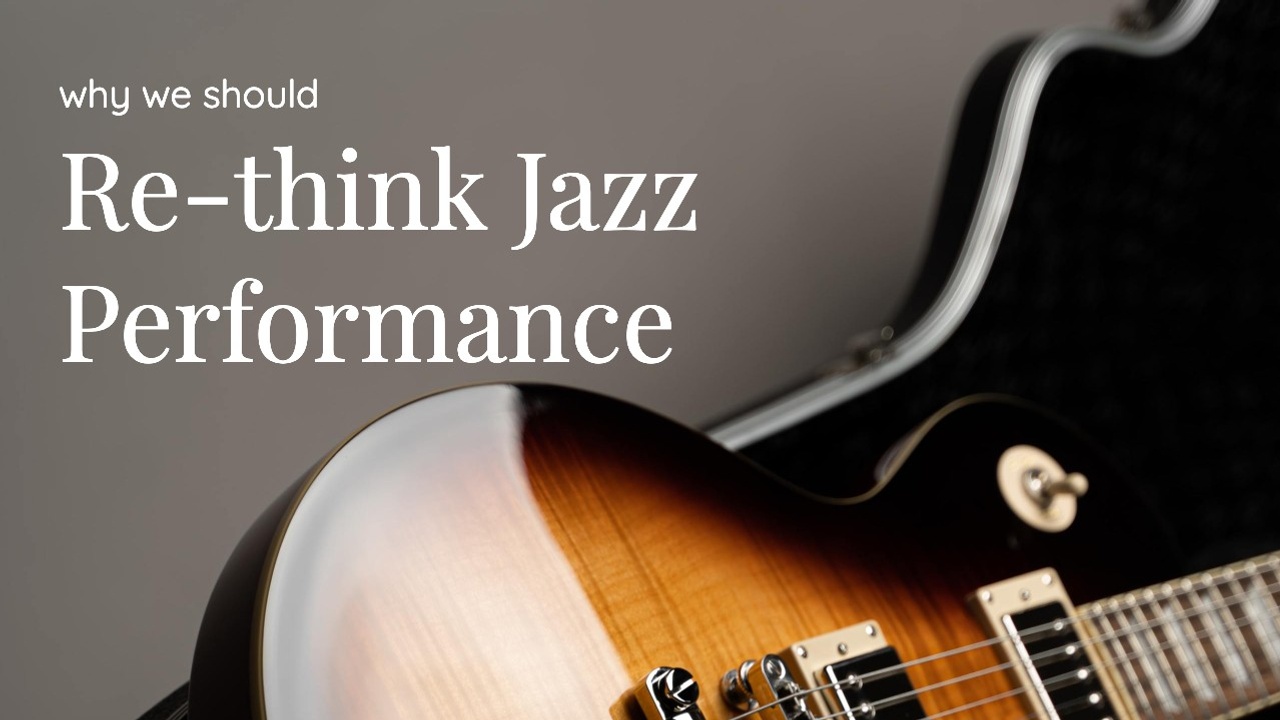
Why We Need To Re-Think Jazz Performance
Jul 29, 2021Guest Post by Nathan Corr
Jazz is wondrous music. Jazz musicians who have never met each other before being able to come together and spontaneously create music using a common language. Individual performances are rarely the same because every performance is a reflection of each musician’s current state of being. The very fabric of musical language is woven, unraveled, and woven together again in ways that have never been heard before, all at a moment’s notice.
But you often wouldn’t know how wonderful it is just by watching the musicians perform.
I know that this is an odd statement to make. What does how the band looks have anything to do with how good it sounds? Jazz can be very cerebral music—a listening music, if you will—so wouldn’t fretting over how we look or what we do on-stage take away from that? Many of you may even be insulted by the implication that your music—the music that you studied, practiced, apprenticed for, and toiled over for countless hours—might not be good enough to speak for itself. I assure you, your music is good enough, and that what you have to say is worth saying.
In fact, I believe that what you have to say is worth more than simply saying it—it deserves good performance. A speaker might have absolute mastery over the English language and its various elements. He might also have something powerful, compelling, or interesting to say. But, if the speaker doesn’t use the right body language at the right time, doesn’t make timely eye contact, or presents her material in a confusing or inconsistent order, her powerful message can be lost in transmission. What he or she has to say can be hindered by how she decides to say it or what she does or doesn’t do physically. One only needs to look to a presentation by Steve Jobs or a TED Talk speaker to understand the clarity good performance provides a message.
Consider how the last jazz guitarist you saw performing live looked while performing a solo.
- How did they look or act when playing an up-tempo swing song?
- Did they look any different for an emotional ballad?
- Did their body language change to reflect the musical gestures they made?
- Did they stare at their fretboard the entire time, enter some kind of jazz trance?
- Did they actually connect with their fellow musicians?
- What about the horn player—did they stand at the front of the stage sipping their beer while the pianist took a solo?
Did anyone even acknowledge the audience during the music?
Watch enough performances, and you will notice that there are typical things that jazz musicians are prone to doing or not doing that can actually take away from the music, draw an audience’s attention to the wrong elements at the wrong time, or even alienate the audience.
Likewise, there are performance techniques that aren’t strictly musical that plenty of musicians neglect to practice.
Again, I want to reassure you: good performance is not the same as entertainment. It isn’t supposed to take away from the particular appeal of jazz music as a genre. If you want to, you can light your guitar on fire. You can practice some band choreography for a groove section. Or perhaps, you can flip your sticks around like this guy:
... but you don’t have to.
Good performance is about establishing a connection with your audience through which your music—your message—can speak for itself. It's about effective communication skills—skills which musicians in any style can benefit from.
Guest Post by Nathan Corr
Nathan Corr graduated with distinction at Carleton University (Ottawa) studying under Tim Bedner and Roddy Ellias. In order to continue to hone his craft, he moved to Toronto in 2015. Nathan performs, writes, and arranges jazz standards, originals, and video game music. He currently teaches and performs in Toronto, Canada.









